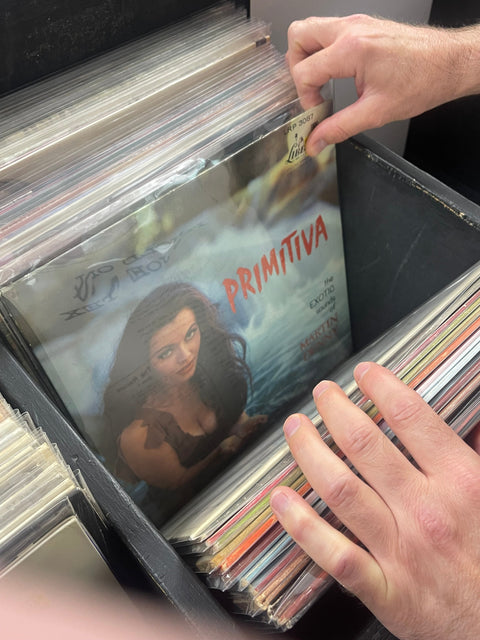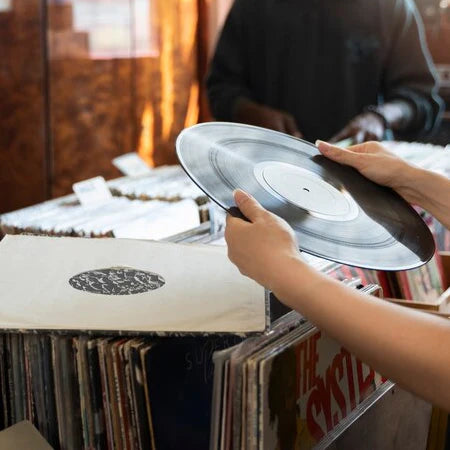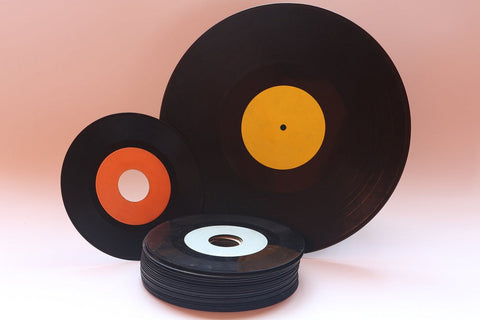
Vinyl + Vinyl = Vinyl
Vinyl x Vinyl = Vinyl
For the record (pun intended), the plural of vinyl is vinyl, not vinyls. Even though it’s commonly (mis)used nowadays, vinyls is not a word. You won’t find it in any standard dictionary… at least not yet. And if you say vinyls in the presence of almost anyone who’s been dealing with vinyl for more than about 20 years, they might bristle a little bit upon hearing it.
Vinyl is a word that is considered to be a mass noun; essentially meaning that its singular and plural versions are the same. Think, for example, of the nouns rice, literature, blood, or furniture. Hopefully, you get the idea.
So how did this misnomer come to be?
It’s hard to say exactly, because language is a fluid thing and word origins can be difficult to pin point, but I have a theory.
First, for a little bit of context and history, let’s take a very brief, simplified look at the evolution of vinyl.
From about 1910 to the early 1950s, most records only had one song on each side. They were either 10” or 7” in diameter. 10” records were commonly known as 78s and 7” records were commonly known as 45s. Those numbers referred to how many revolutions per minute (RPMs) they spin at when played.
After that time, the 45 remained and the LP (Long Player) was introduced. The LP became very popular, allowing for longer uninterrupted listening times with multiple songs on each side. Those are typically 12” in diameter and usually play at 33 1/3 RPMs.
Since then, depending on the context, a single piece of 12” vinyl can also be called an LP or a record or an album, and the plural of an LP or a record or an album is records, LPs, and albums.
A 7” vinyl also can be called a 45 or a single, and the plural of a 45 or a single is 45s and singles.
Starting to see a pattern? See where the plural addition of the “s” might come into play down the line, even if technically incorrect?
Still, how did we ultimately get to vinyls?
When CDs (Compact Discs) became popular in the late 1980s to early 1990s, and the popularity of records began to diminish, many old-school record buyers simply used language they were familiar with and referred to CDs as albums or even records, for shorthand. However, when the vinyl record resurgence started around 2006, there came a whole new generation of record buyers not steeped in the linguistic traditions of those before them. There seemed to be a trend among new record buyers to clearly distinguish CDs from vinyl records by referring to what had formerly been commonly called a record or an LP or an album or a 45/single as just vinyl. So naturally, the plural of vinyl is vinyls, right? No, but here we are nonetheless.
Anyway, it’s just a theory. And when all is said and done, we at Rockaway don’t really care what you call them, as long as you find what you love and enjoy them!
Dave Kent, Rockaway GM





